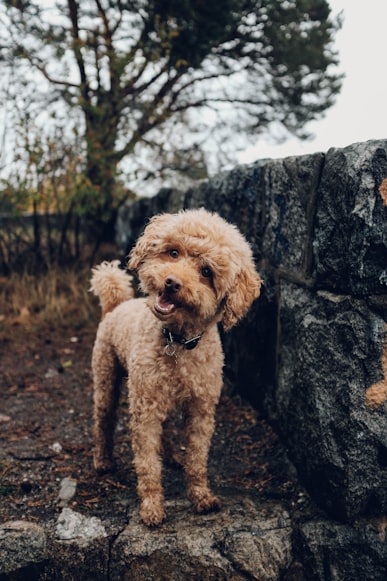Raw Dog Diet for Puppies: A Comprehensive Guide

Introduction
A raw dog diet, also known as a BARF (biologically appropriate raw food) diet, has become increasingly popular among pet owners who believe in feeding their dogs a more natural and species-appropriate diet. While a raw dog diet can offer several benefits for adult dogs, it’s essential to approach it with caution when feeding it to puppies.
Benefits of a Raw Dog Diet for Puppies
- Higher nutrient content: Raw meat and organs are rich in nutrients, including protein, fat, vitamins, minerals, and enzymes, which are essential for growing puppies.
- Improved digestion: Raw food can contain enzymes that aid in digestion, making it easier for puppies to absorb nutrients.
- Stronger immune system: Raw meat provides probiotics, which support the development of a healthy immune system.
- Reduced risk of allergies: A raw diet eliminates common allergens found in processed dog food, such as grains and soy.
Risks of a Raw Dog Diet for Puppies
- Bacterial contamination: Raw meat and organs can carry harmful bacteria, such as Salmonella and E. coli, which can cause serious illnesses in puppies.
- Nutritional deficiencies: A raw diet may not provide all the necessary nutrients in the correct balance for growing puppies.
- Safety issues: Puppies are more likely to swallow bones or other sharp objects that could cause injuries.
- Socialization problems: Feeding raw meat can make puppies more aggressive around other dogs that are not fed the same diet.
Transitioning to a Raw Dog Diet
If you decide to transition your puppy to a raw dog diet, it’s crucial to proceed gradually and monitor their health closely.
- Start by adding small amounts of raw meat: Mix a small amount of ground raw meat into your puppy’s regular food.
- Gradually increase the amount of raw food: As your puppy adapts, slowly increase the proportion of raw food in their diet.
- Observe your puppy’s health: Watch for any signs of digestive upset, lethargy, or changes in behavior.
- Consult with a veterinarian: It’s always recommended to consult with a qualified veterinarian before implementing a raw dog diet for your puppy.
Recommended Raw Food Sources for Puppies
- Meat: Beef, chicken, turkey, lamb, pork
- Organs: Liver, heart, kidney
- Bones: Chicken necks, lamb ribs, pork trotters (remove sharp edges)
- Vegetables: Carrots, broccoli, spinach (in moderation)
Supplements
Puppies on a raw dog diet may require additional supplements to ensure they receive all the necessary nutrients. This may include:
- Calcium: Bone meal or eggshell powder
- Vitamin D: Cod liver oil
- Probiotics: Yogurt or fermented vegetables
Safety Precautions
- Wash your hands thoroughly: Always wash your hands before and after handling raw meat.
- Store food safely: Raw meat and organs should be refrigerated or frozen to prevent bacterial growth.
- Defrost meat properly: Thaw meat in the refrigerator overnight or under cold running water.
- Dispose of waste properly: Wrap and dispose of raw meat and bones in a secure bag to prevent contamination.
Conclusion
A raw dog diet can offer potential benefits for puppies, but it’s essential to approach it with caution and ensure it’s done safely and appropriately. By following the steps outlined in this guide, you can provide your puppy with a healthy and balanced diet while minimizing the risks associated with raw feeding. Remember to consult with a veterinarian for personalized advice and monitoring.
Introduction

Introduction
As a responsible pet blogger specializing in raw dog diets, it is imperative to address the health and dietary needs of puppies. The raw diet has gained popularity among pet owners seeking a more natural and species-appropriate approach to feeding their canine companions. This article will explore the benefits of a raw diet for puppies and highlight the key differences between raw and commercial dog food.
Benefits of a Raw Diet for Puppies
- Enhanced Immune System: A raw diet provides puppies with a range of essential nutrients that support their developing immune system, including vitamins, minerals, and enzymes.
- Optimal Digestion: Raw food contains natural enzymes that aid in digestion, reducing the risk of digestive issues common in puppies.
- Strong Teeth and Bones: The chewing action required to consume raw food helps strengthen puppies’ teeth and jaws, while the raw meat and bones provide essential nutrients for bone development.
- Reduced Allergies: Some commercial dog foods contain ingredients that can trigger allergies or sensitivities. A raw diet eliminates the risk of these reactions.
- Increased Energy and Vitality: Puppies fed a raw diet tend to have higher energy levels and overall vitality.
Differences Between Raw and Commercial Dog Food
1. Ingredients:
* Raw diets consist of fresh, unprocessed meat, organs, bones, and vegetables.
* Commercial dog food typically contains processed grains, fillers, and synthetic supplements.
2. Moisture Content:
* Raw food has a higher moisture content than commercial dog food, which helps puppies stay hydrated.
3. Nutritional Value:
* Raw diets provide a more concentrated source of nutrients compared to commercial dog food.
4. Digestion:
* Raw food requires more chewing and digestion than commercial dog food, which can be beneficial for puppies’ digestive health.
5. Safety:
* Raw diets can carry the risk of bacterial contamination if not prepared correctly. Commercial dog food undergoes processing to eliminate the risk of bacteria.
Conclusion
The raw diet offers numerous potential benefits for puppies, including enhanced immune function, improved digestion, stronger teeth and bones, and reduced allergies. While there are key differences between raw and commercial dog food, it is essential to consult with a veterinarian before transitioning your puppy to a raw diet. Proper preparation and handling of raw food are crucial to ensure the safety and well-being of your furry friend. Remember that the health and happiness of your puppy should always be the primary consideration when making feeding decisions.
Dietary Considerations

As a responsible pet owner, it’s crucial to provide your puppy with a nutritious diet that supports their growth and development. For those opting for a raw food approach, understanding the dietary requirements is essential. Here are the key nutrient considerations to keep in mind:
Protein Sources: Essential Amino Acids and Lean Meats
Growing puppies require a high amount of protein to build and repair tissues. Raw meat sources provide essential amino acids that cannot be synthesized by the body. Lean meats such as chicken, turkey, beef, and lamb are excellent sources of protein. Ensure that the meats are fresh, not spoiled, and preferably free-range or grass-fed.
Carbohydrates: Fruits, Vegetables, and Whole Grains
Carbohydrates serve as an energy source for puppies. Fruits and vegetables provide digestible fiber, vitamins, and antioxidants. Whole grains like brown rice and quinoa can also be incorporated in small amounts. However, avoid starchy and processed carbohydrates that can lead to digestive issues.
Fats: Omega-3 and -6 Fatty Acids
Fats are a concentrated source of energy and provide essential fatty acids. Omega-3 and omega-6 fatty acids are crucial for cognitive function, skin and coat health, and immune system support. Good sources of Omega-3s include fish oil and salmon. Omega-6s can be found in chicken fat and plant-based oils such as sunflower oil.
Additional Considerations:
- Variety: Offer a variety of protein sources, fruits, and vegetables to ensure your puppy receives a well-balanced diet.
- Bone Content: Puppies need calcium for bone development. Raw meaty bones, such as chicken necks or wings, can be given as treats or ingredients in meals to provide calcium and prevent teeth cleaning.
- Supplements: While a balanced raw diet can meet most nutritional needs, consult with a veterinarian about the necessity of supplements like calcium, probiotics, and digestive enzymes.
- Hygiene: Raw food diets require strict hygiene practices. Thoroughly wash and disinfect all food handling utensils, and ensure meats are fresh and properly stored to prevent bacterial contamination.
Remember, transitioning your puppy to a raw diet should be done gradually over several weeks. Closely monitor your pet’s health and adjust the diet accordingly if necessary. Always consult with a qualified veterinarian for personalized advice and to ensure your puppy’s well-being on a raw food diet.
Meal Planning

Providing your puppy with a nutritionally balanced raw diet is essential for their optimal growth and development. Here’s a comprehensive guide to meal planning for puppies on a raw dog diet:
1. Calorie Requirements
Determining your puppy’s calorie requirements is crucial. Consider the following factors:
- Age: Puppies need more calories than adult dogs.
- Weight: Calories should be adjusted based on the puppy’s weight.
- Activity Level: Active puppies require more calories than sedentary ones.
A general guideline is to provide 300-400 calories per kilogram of body weight daily. Consult with your veterinarian to determine the specific calorie needs for your puppy.
2. Portion Sizes and Meal Frequency
- Portion Sizes: Divide your puppy’s daily calories into three or four meals. For example, a 10-pound puppy might receive 300-400 grams of raw food daily, divided into three portions.
- Meal Frequency: Puppies should be fed three to four times a day until they are about 6 months old. As they get older, you can gradually reduce the frequency to two meals per day.
3. Nutrient Composition
A balanced raw diet should include the following macronutrients and micronutrients:
- Protein: 25-35% of calories
- Fat: 15-25% of calories
- Carbohydrates: 20-30% of calories
- Vitamins: A, D, E, K, B12
- Minerals: Calcium, phosphorus, magnesium, iron
4. Supplementing with Vitamins and Minerals
While a well-rounded raw diet should provide most essential nutrients, supplementation may be necessary for growing puppies. Consult with your veterinarian about the following supplements:
- Calcium: Puppies need about two to three times more calcium than adult dogs.
- Phosphorus: Phosphorus requirements are high during puppyhood.
- Vitamin D: Vitamin D helps with calcium absorption.
- Vitamin K2: Vitamin K2 supports bone health.
- Iron: Iron is essential for preventing anemia.
5. Sample Meal Plan
Here’s a sample meal plan for a 10-pound puppy on a raw dog diet:
- Breakfast: 100 grams of raw chicken muscle meat, 20 grams of raw liver, 20 grams of raw bone
- Lunch: 100 grams of raw beef mince, 20 grams of raw zucchini, 20 grams of raw apple
- Dinner: 100 grams of raw salmon, 20 grams of raw peas, 20 grams of raw pumpkin
- Evening Snack: 20 grams of cottage cheese
Remember, this is just a sample plan and adjustments may need to be made based on your puppy’s individual needs. It is always advisable to consult with your veterinarian before making significant changes to your puppy’s diet. By providing a balanced and nutrient-rich raw dog diet, you can ensure that your puppy gets the nutrition it needs to thrive.
Raw Meat Sources

As a responsible pet blogger specializing in the raw dog diet, it’s crucial to provide comprehensive information on the essential raw meat sources for puppies. A well-rounded diet rich in high-quality animal meat is paramount for their optimal health and development.
Human-Grade or High-Quality Animal Meat
- Select raw meat that is intended for human consumption or is of the highest quality available for animals.
- Avoid processed meats, such as hot dogs or lunch meats, as they contain preservatives and additives harmful to puppies.
Types of Meat
1. Chicken:
* Rich in protein and low in fat, making it an excellent choice for puppies.
* Can be fed whole or ground, with bones for added calcium.
2. Beef:
* A good source of protein, iron, and B vitamins.
* Ground beef is a popular choice for puppies, but whole muscle cuts can also be provided.
3. Lamb:
* Highly palatable and rich in protein, fat, and vitamins.
* Consider introducing lamb gradually, as it can be richer than other meats.
4. Pork:
* A source of protein and fat, but should be cooked to kill any potential parasites.
* Avoid giving puppies raw pork bones due to the risk of Salmonella.
5. Fish:
* Excellent source of omega-3 fatty acids, which support brain and eye development.
* Choose oily fish such as salmon, mackerel, and sardines.
Handling and Storage Guidelines
- Always practice good hygiene when handling raw meat to prevent contamination.
- Wash your hands after handling meat and sanitize any surfaces that come into contact with it.
- Store raw meat in the refrigerator or freezer to prevent spoilage.
- Thaw frozen meat in the refrigerator or microwave before feeding.
- Avoid leaving raw meat out for extended periods at room temperature.
Conclusion
A raw dog diet can provide puppies with the essential nutrients they need for healthy growth and development. By choosing human-grade or high-quality animal meat sources and following proper handling and storage guidelines, you can ensure that your puppy receives a nutritious and balanced diet. Remember to consult with your veterinarian for personalized guidance and to monitor your puppy’s health regularly.
Fruits and Vegetables
Benefits of Fruits and Vegetables
Fruits and vegetables provide a wealth of essential nutrients for puppies, including:
- Vitamins (A, C, E, K)
- Minerals (calcium, potassium, magnesium)
- Fiber
- Antioxidants
Recommended Amounts
The recommended amount of fruits and vegetables in a puppy’s raw diet varies depending on their age, weight, and activity level. Generally, you should aim to provide 10-20% of their daily food intake as fruits and vegetables.
Safe and Unsafe Fruits and Vegetables
Safe Fruits:
- Apples (without seeds)
- Bananas
- Blueberries
- Cantaloupe
- Cranberries
- Mango
- Peaches (without pits)
- Pears
Unsafe Fruits:
- Grapes
- Avocados
- Cherries (without pits)
- Persimmon
- Citrus fruits
Safe Vegetables:
- Asparagus
- Broccoli
- Brussels sprouts
- Carrots
- Celery
- Cucumbers
- Green beans
- Spinach
Unsafe Vegetables:
- Onions
- Garlic
- Leeks
- Chives
- Rhubarb
- Potatoes (raw)
Incorporating Fruits and Vegetables into Meals
Incorporate fruits and vegetables into your puppy’s raw meals by:
- Pureeing or mashing and adding them to ground meat or bones
- Cutting them into small pieces and mixing them in with other raw food
- Offering them as treats between meals
Note:
- Always introduce new fruits and vegetables gradually to avoid digestive upset.
- Wash fruits and vegetables thoroughly before feeding them to your puppy.
- Supervise your puppy while they eat fruits and vegetables, especially any that contain seeds or pits.
- If you have any concerns about feeding fruits and vegetables to your puppy, consult with your veterinarian.
Bones
Introduction
Incorporating bones into a raw dog diet for puppies can offer several benefits, but it’s crucial to understand the potential risks and follow proper feeding guidelines. This article will explore the benefits, risks, types, preparation, and feeding instructions of bones for puppies on a raw diet.
Benefits of Feeding Bones
- Dental Health: Gnawing on bones helps clean teeth and remove plaque.
- Jaw Strength: Chewing bones strengthens jaw muscles and promotes dental alignment.
- Nutrient Content: Bones are rich in calcium, phosphorus, and other minerals essential for bone growth and development.
- Natural Behavior: Dogs have an instinctive desire to chew and gnaw, and bones provide a natural outlet for this behavior.
Risks of Feeding Bones
- Digestive Issues: Cooked bones can splinter and cause gastrointestinal injuries or blockages.
- Dental Damage: Hard bones can damage teeth if chewed aggressively.
- Ingesting Harmful Substances: Bones that have been exposed to pesticides, chemicals, or medications can pose a health risk.
Types of Bones
Raw Bones:
* Raw chicken necks, backs, and wings
* Beef ribs, knuckle bones, and marrow bones
Cooked Bones:
* Avoid cooked bones as they become brittle and can splinter.
Recreational Bones:
* These bones are intended for chewing and entertainment rather than ingestion. Examples include antlers and bully sticks.
Edible Bones:
* Raw bones that can be consumed in their entirety. Examples include chicken necks and wings.
Preparation and Feeding Instructions
- Source: Obtain bones from a reputable butcher or pet store that sources bones from healthy animals.
- Size: Choose bones appropriate for your puppy’s size and age.
- Frequency: Feed bones 1-2 times per week in moderation.
- Supervise: Always supervise your puppy while they are chewing bones.
- Disposal: Remove and discard any small or sharp pieces of bone that have been gnawed down.
Conclusion
Feeding bones to puppies on a raw diet can provide several benefits, but it’s crucial to do so cautiously and follow proper guidelines. Choose raw bones over cooked bones, select appropriate types and sizes, and supervise your puppy while they chew. By adhering to these instructions, you can safely provide your furry friend with the health and enrichment that bones offer.
Transitioning to a Raw Diet
Introduction
Introducing a raw dog diet to your puppy can provide numerous health benefits, including improved digestion, skin and coat health, and immune function. However, the transition must be gradual to avoid digestive upset. This article will guide you through the steps to transition your puppy to a raw diet safely and effectively.
Step 1: Gradual Introduction
Begin by mixing small amounts of raw meat into your puppy’s regular kibble. Start with just 5-10% raw and gradually increase the ratio over the course of several days or weeks. This will give your puppy’s digestive system time to adjust.
Step 2: Avoid Sudden Changes
Never abruptly switch your puppy to a 100% raw diet. The sudden change can cause digestive upset, vomiting, or diarrhea. Gradually increase the raw portion of the diet over a period of time.
Step 3: Monitor Progress
Closely monitor your puppy’s response to the raw food. Watch for signs of digestive upset, such as vomiting, diarrhea, or constipation. If any of these symptoms occur, reduce the amount of raw food or discontinue it temporarily.
Step 4: Adjust Diet as Needed
Once your puppy has transitioned to a raw diet, continue to monitor their progress. Adjust the diet as needed to ensure proper nutrition and prevent digestive issues. This may involve adjusting the ratio of meat, organs, bones, and vegetables.
Additional Tips:
- Use high-quality raw meat sources from a reputable butcher or pet food supplier.
- Freeze the raw meat for at least three days before feeding to kill any potential bacteria.
- Thaw the meat in the refrigerator overnight before feeding.
- Offer a variety of raw meat, organs, and bones to ensure a balanced diet.
- Add fresh vegetables and fruits to supplement the diet and provide essential vitamins and minerals.
- Transitioning a puppy to a raw diet should be done with the guidance of a qualified veterinarian.
By following these steps and monitoring your puppy’s progress, you can safely and effectively transition your pet to a raw diet, supporting their overall health and well-being.
Health Considerations
Introducing a raw dog diet to your puppy can offer potential health benefits, but it’s crucial to be aware of the inherent health considerations to ensure the well-being of your furry companion.
Parasite Prevention:
Raw meat and organs can harbor parasites that are harmful to puppies and humans alike. To minimize the risk of parasitic infection, take the following precautions:
- Freezing: Freeze all raw meat and organs for at least 3 weeks at -4°F or below. This has been shown to effectively kill most common parasites.
- Cooking: In the absence of a freezer, thoroughly cook all meat and organs to an internal temperature of 165°F.
- Deworming: Regularly deworm your puppy with a veterinarian-recommended dewormer to prevent any potential infestations.
Hygiene:
Proper handling and food preparation are essential to prevent bacterial contamination. Always follow these guidelines:
- Wash Hands: Always wash your hands thoroughly before and after handling raw meat or organs.
- Clean Surfaces: Disinfect all surfaces, utensils, and bowls that come into contact with raw meat.
- Separate Raw Food: Store raw meat and organs separately from other foods to prevent cross-contamination.
- Thaw Safely: Thaw frozen raw food in the refrigerator, not at room temperature.
Potential Allergies or Sensitivities:
Some dogs may develop allergies or sensitivities to certain ingredients in a raw meat diet. Symptoms of allergies or sensitivities can include:
- Itching and skin irritation
- Gastrointestinal problems (e.g., vomiting, diarrhea)
- Respiratory issues (e.g., coughing, wheezing)
If you notice any of these symptoms after introducing a raw dog diet, consult your veterinarian promptly for diagnosis and treatment options.
Other Considerations:
- Nutritional Supplements: Puppies on a raw diet may require additional nutritional supplements to ensure balanced nutrition. Consult with a veterinarian to determine the appropriate supplements.
- Regular Veterinary Check-ups: Regular veterinary check-ups are crucial to monitor your puppy’s health and progress on a raw diet.
By carefully considering these health considerations, you can potentially provide your puppy with a safe and nutritious raw food diet while minimizing the risks associated with it. Always consult with your veterinarian before making any significant dietary changes to ensure the optimal health and well-being of your furry friend.




















